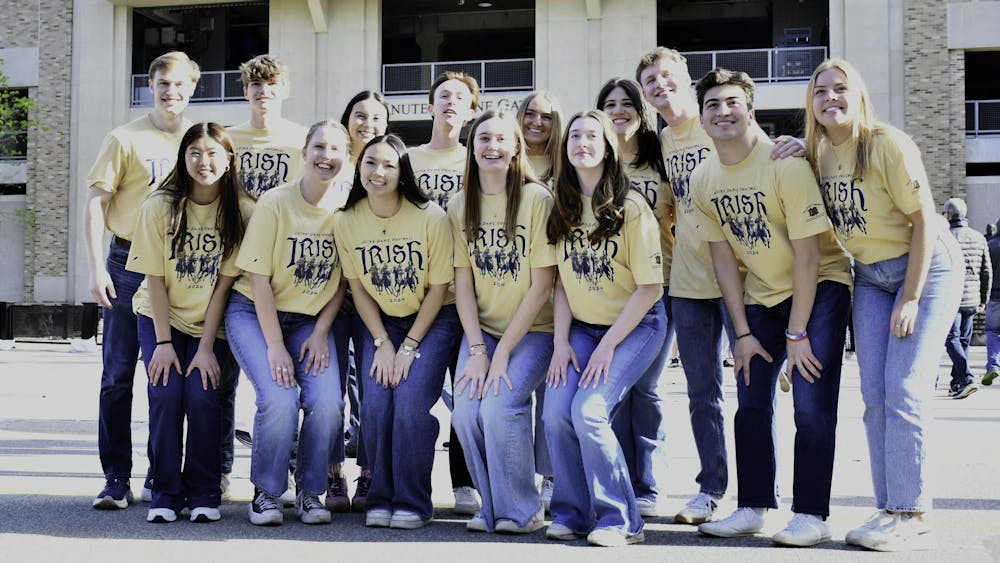More than 850 students in Saut-d’Eau, Haiti, participated in a preliminary test to assess the progress of Notre Dame’s Haiti Program’s mission to eliminate lymphatic filariasis (LF) from the island. Only one child in the community was infected with the parasite that causes LF, indicating the effectiveness of the program’s course of action.
The mission of the Notre Dame Haiti Program is to eliminate LF from Haiti by 2020, according to Earl Carter, managing director of the Haiti Program and assistant dean in the College of Science. LF, also known as elephantiasis, is a disease that attacks an individual’s lymph system and causes parts of the body to become extremely swollen and deformed.
Lead researcher and founder of the Haiti Program Fr. Thomas Streit said the results of the preliminary tests signify the success of the program’s efforts.
“Recent data shows that the model works well,” Streit said. “We and our partners have succeeded, even where there are lots of mountains making it hard to distribute drugs everywhere and lots of superstition about the disease.”
Carter said more than 44 percent of Saut-d’Eau’s population was infected with the LF parasite when it was first surveyed 14 years ago. Now, after nine years of treatment, preliminary tests showed an infection rate of 0.1 percent, demonstrating the disease has almost completely disappeared from Saut-d’Eau.
According to the Haiti Program’s website, LF is one of 13 neglected tropical diseases and affects 1.2 million people worldwide. Tiny threadworms attack the lymphatic system and prevent them from fighting infections, resulting in pain, scarring and swelling in the limbs, breasts or genitals.
Streit said the medical and social effects of LF in Haiti are devastating.
“People can’t work,” Streit said. “Women with the disease are shunned by potential husbands. In addition to the episodes of fever, burns and swelling, they become the ‘town monster,’ so they don’t want to go out.”
Streit said just as poverty causes disease, disease leads to more poverty.
“[LF] is the single infectious disease most closely tied to poverty,” Streit said. “The people that get it are disabled and can’t work. Their families suffer lost opportunities because they have to care for the sick one. With the terrible smell that makes this disease worse than leprosy in terms of being disabled, if the family has a business, customers and clients will avoid the house or business out of fear of contagion.”
Carter said the Haiti Program consists of three pillars used fight LF in Haiti: mass drug administration (MDA), the production and distribution of co-fortified salt and treatment of those already infected with LF.
“The MDA is a series of annual cycles,” Carter said. “The World Health Organization’s standard is that you have a site, normally manned by about three people, who distribute the correct amount of pills to patients based upon their size and age a couple times a year. Sites are located throughout the community.”
“Most of Haiti is currently in its fourth annual MDA cycle,” Carter added. “In Saut-d’Eau, the drug has been administered nine times. The fifth cycle for most communities will finish in spring of 2016, and then we should be able to start surveying and hopefully find that we’ve only got a few areas to focus on.”
Carter said the Haiti Program uses co-fortified salt to provide an alternative source of drugs to combat LF and to address a group of diseases called iodine deficiency disorders, or IDD.
“The equivalent of one of those little bags of salt has roughly the amount of DEC, the drug that kills the parasite, that would be taken as an annual dosage for a family of five,” Carter said. “Haitians use a lot of salt in cooking. This really may be a way of providing a higher level of insurance against the parasite than you get through the traditional means of distributing pills to folks.”
Streit said the Haiti Program’s next step involves assessing the prevalence of LF in Haiti and identifying areas that are free of the disease.
“I think this new data especially indicates that what we’ve labored long and hard for is finally starting to bear tremendous fruit,” Carter said. “We’re seeing that there can be a solution in a country where many anecdotally have said we’d never be able to accomplish this. If you could do this in Haiti, there’s probably a chance you could do this anywhere.”
Streit said his goal for the Haiti Program is to finish the job started back in 1999.
“That entails lots of hard work, the money to support the work and lots of prayers and goodwill, especially from the Haitian people, who deserve to have a better quality of life through these efforts,” Streit said. “The better quality of life will help the country move ahead and economically be more a part of the global community.”
Carter said the Haiti Program embodies the service aspect of the University’s mission.
“This has been one of the more rewarding things that I’ve ever been associated with,” Carter said. “To see a university operationalize its beliefs on service in a very challenging environment and to see such good results, in the social and scientific fields, has been an incredible experience.”













